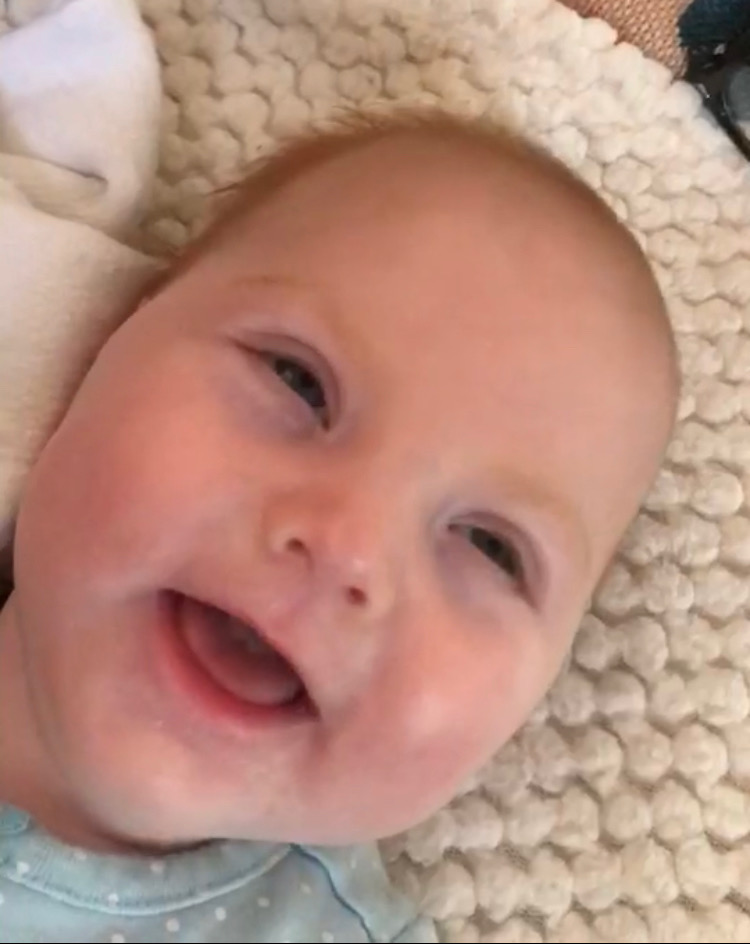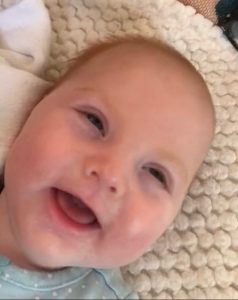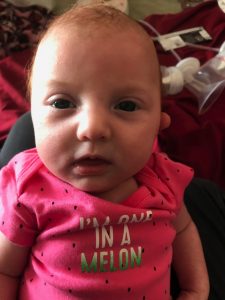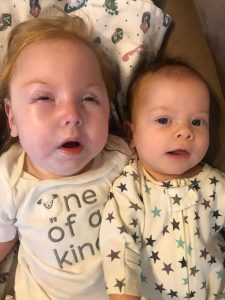8/3/2021
·Enable high contrast reading
Holding onto the hope of “BUT she can...”

One of the currents that runs through most of the family experiences parents share with CPN is that of shifting expectations and holding on to hope. Perhaps it is more accurate to call it shifting expectations to allow ourselves to hold on to hope. The latter, hope, being dependent on the former, shifting expectations. Regardless, this current is ever present for parents who adjust as their child’s condition evolves.
It is our observation that it is often only in retrospect that parents are able to describe this act of holding on to hope and seeking positivity. There is so much poignancy and courage in their reflection.
This reflection from Camryn’s mother Alanna reads like a stream of consciousness, fitting for the quick-moving current it describes.
***
 We don’t know why she moves differently BUT she eats well, she is kicking her legs and has her walking reflex, her EEG is typical, she’s happy and we will see how things go. She should be just fine and the doctor said her jitteriness might go away on its own!
We don’t know why she moves differently BUT she eats well, she is kicking her legs and has her walking reflex, her EEG is typical, she’s happy and we will see how things go. She should be just fine and the doctor said her jitteriness might go away on its own!
Six weeks later the first seizure happens and the genetic results come back. We have a diagnosis. There is a huge range of how these kiddos present. She might need a wheelchair for locomotion and so what— she will be a happy kid! She eats well, she kicks her legs, her EEG is typical, she’s smiling/happy, she should be fine!
One month later, doctors cannot stop what have become daily seizures, “moderate background slowing” on EEG, less frequent leg kicking and smaller kicks. She may need to be in special education when she starts school and so what— what’s really important is she’s happy and smiling and she eats really well! This new doctor will figure things out!
Six weeks later, she is not focusing her eyes on objects as well. She doesn’t really move. BUT she eats well and laughs at sounds and movement. I hope she will be ok— please just keep showing us you are happy. We need to find an even better doctor for another medical opinion.
Six more weeks and she is not really blinking and looks sleepy all the time. I don’t think she can see me. I wonder if she can hear me. Why am I mostly dripping the milk in her mouth? She will hardly ever suck on the bottle. Why hasn’t she smiled since Mother’s Day a couple of weeks ago? Why do things keep going downhill for her? Is she going to fade away? BUT, she can still eat some and she is such a good sleeper knowing when it’s night time. Her circadian rhythm is strong! 
Inpatient stay… EEG activity has become unorganized with large sharp spikes. We are told not to feed her or drip milk into her mouth due to risk of aspiration pneumonia. Do we get a g-tube for her or not? If we extend her life with a g-tube, will they find a treatment soon? If we extend her life with a g-tube, will she continue in her current state with no treatment to improve her condition? No smile to show she is happy? No desire to drink milk anymore? Can she see or hear me? This is all so sudden….How do we know what to do? Somebody just tell me what to do so the weight isn’t on me.
(Later, I will wonder: should we have opted out of the g-tube in the first place and let her go on her own terms around 6 months of age? Maybe. We had to make a choice with the information we had. Could we see into the future? No. Would we have regrets with either decision? Probably.)
After six weeks inpatient, we go home with hospice for almost two years before she passes away. During that time, she couldn’t see, she couldn’t move, there was no indication she could hear, she couldn’t eat by mouth, she very rarely gave a random smile, at what I’m not sure. BUT she seemed to look especially relaxed soaking in her kiddy pool and being held close. This was some form of happiness for her beyond just keeping her comfortable. She also knew when it was night and would go into her deep sleep. So she knew something.
The goal was to keep her comfortable while waiting on this new gene therapy trial. She didn’t make it to the trial. But we kept her comfortable between myself, my partner, the home nurses, and her grandparents.

She made my life complete and the happiest I’ve ever been. The happiness over time was exchanged with grief in layers of painful losses that accumulated all the way to the loss of her life. Holding onto the hope of “BUT SHE CAN”, lowering the threshold every few weeks until grasping at straws for any evidence that she “can do.” She could no longer “do” in the sense of actions but she influenced and impacted many many people in her short life, and she brought us the gift of strength and perseverance, and the gift of realizing impermanence. I am sure wherever she is, she is now able to “do” and she is free, making up for lost time.




